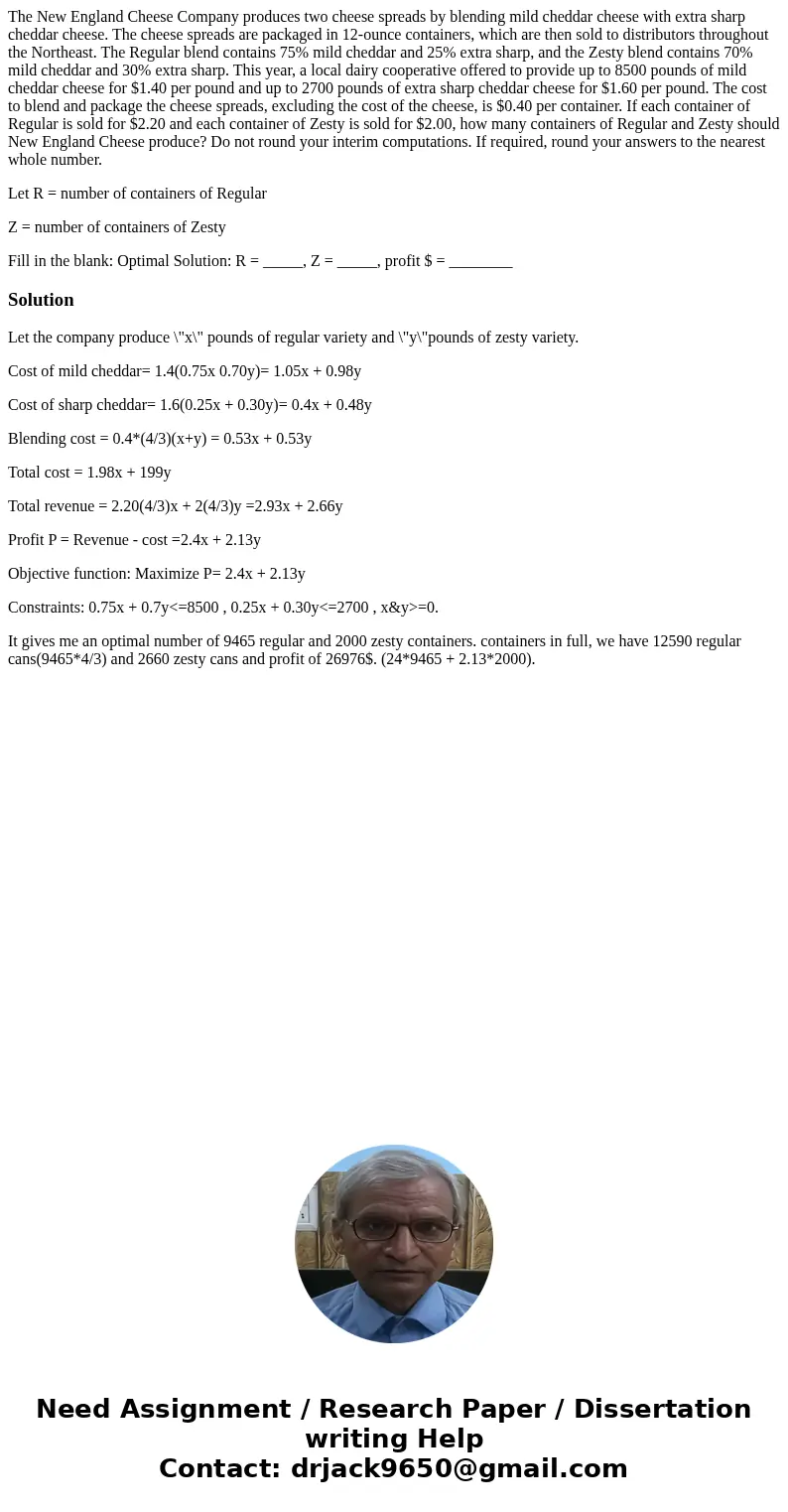The New England Cheese Company produces two cheese spreads b
The New England Cheese Company produces two cheese spreads by blending mild cheddar cheese with extra sharp cheddar cheese. The cheese spreads are packaged in 12-ounce containers, which are then sold to distributors throughout the Northeast. The Regular blend contains 75% mild cheddar and 25% extra sharp, and the Zesty blend contains 70% mild cheddar and 30% extra sharp. This year, a local dairy cooperative offered to provide up to 8500 pounds of mild cheddar cheese for $1.40 per pound and up to 2700 pounds of extra sharp cheddar cheese for $1.60 per pound. The cost to blend and package the cheese spreads, excluding the cost of the cheese, is $0.40 per container. If each container of Regular is sold for $2.20 and each container of Zesty is sold for $2.00, how many containers of Regular and Zesty should New England Cheese produce? Do not round your interim computations. If required, round your answers to the nearest whole number.
Let R = number of containers of Regular
Z = number of containers of Zesty
Fill in the blank: Optimal Solution: R = _____, Z = _____, profit $ = ________
Solution
Let the company produce \"x\" pounds of regular variety and \"y\"pounds of zesty variety.
Cost of mild cheddar= 1.4(0.75x 0.70y)= 1.05x + 0.98y
Cost of sharp cheddar= 1.6(0.25x + 0.30y)= 0.4x + 0.48y
Blending cost = 0.4*(4/3)(x+y) = 0.53x + 0.53y
Total cost = 1.98x + 199y
Total revenue = 2.20(4/3)x + 2(4/3)y =2.93x + 2.66y
Profit P = Revenue - cost =2.4x + 2.13y
Objective function: Maximize P= 2.4x + 2.13y
Constraints: 0.75x + 0.7y<=8500 , 0.25x + 0.30y<=2700 , x&y>=0.
It gives me an optimal number of 9465 regular and 2000 zesty containers. containers in full, we have 12590 regular cans(9465*4/3) and 2660 zesty cans and profit of 26976$. (24*9465 + 2.13*2000).

 Homework Sourse
Homework Sourse